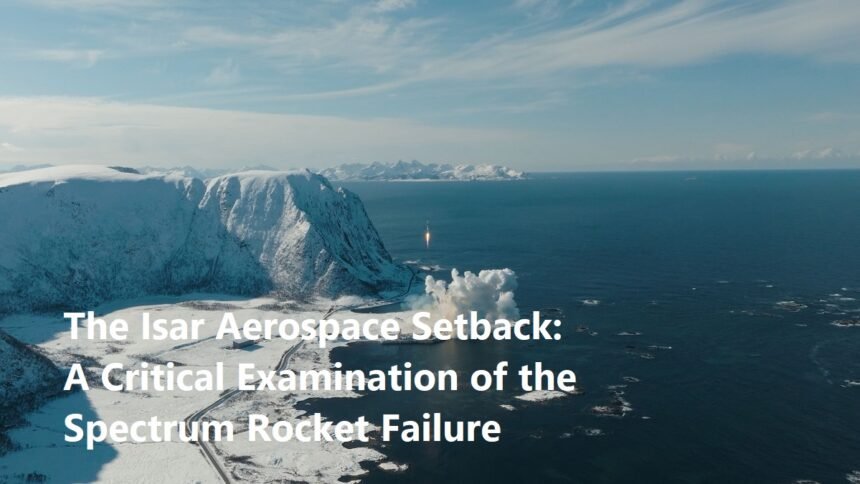The ambitious endeavor of private spaceflight, driven by innovative companies seeking to democratize access to orbit, is not without its inherent risks and setbacks. The recent incident involving Isar Aerospace, a German-based company, serves as a stark reminder of this reality. On March 30, 2025, an unmanned Spectrum rocket, a prototype intended for early testing, crashed and exploded shortly after its launch from the Andøya Spaceport in Norway. This failure, while undoubtedly disappointing, provides a valuable opportunity for the industry and the company itself to learn from the experience and refine their technologies for future success.
The Spectrum rocket represents Isar Aerospace’s aspirations to compete in the burgeoning small satellite launch market. Targeting a niche that larger launch providers often overlook, the company aims to offer cost-effective and dedicated launch solutions. The failed test flight was intended to validate crucial aspects of the rocket’s design and propulsion systems. The immediate aftermath of the explosion triggers a series of critical questions. What were the precise causes of the anomaly? Was it a mechanical failure within the engine? Did the guidance and control system malfunction? Or was the failure rooted in the complexities of the fueling process or launch infrastructure?
A comprehensive investigation is undoubtedly underway, involving engineers, scientists, and potentially regulatory bodies, to meticulously analyze telemetry data, recovered debris, and launch video footage. This thorough analysis is crucial for identifying the root cause of the failure and implementing corrective measures to prevent recurrence. Such investigations are standard practice in the aerospace industry, where safety and reliability are paramount. The lessons learned from the investigation will not only benefit Isar Aerospace directly but will also contribute to the broader understanding of rocket technology and enhance safety protocols within the private spaceflight sector.
The failure also underscores the inherent challenges of developing complex launch vehicles. Rocket engineering is a field riddled with complexities, demanding precision and reliability in every aspect, from the intricate design of the engines to the robustness of the structural components. Unexpected interactions and unforeseen circumstances can quickly derail even the most meticulously planned missions. This particular failure serves as a humbling reminder that even with advanced simulation tools and extensive ground testing, real-world flight conditions can reveal vulnerabilities that are difficult to anticipate.
Furthermore, the incident highlights the crucial role of government support and infrastructure in fostering a thriving private space industry. The Andøya Spaceport, strategically located for polar and sun-synchronous orbits, represents a significant investment in European space capabilities. Continued investment in launch facilities, coupled with supportive regulatory frameworks, is essential for enabling private companies like Isar Aerospace to conduct testing and develop their technologies within a safe and controlled environment.
In conclusion, the failure of the Isar Aerospace Spectrum rocket is a significant setback for the company, but it is not necessarily a fatal blow. The ability to learn from failures is a hallmark of the aerospace industry, and the rigorous investigation currently underway will undoubtedly yield valuable insights. This incident underscores the inherent risks and complexities of rocket development and the importance of meticulous engineering, thorough testing, and supportive government policies. While the future success of Isar Aerospace remains uncertain, their commitment to innovation and their ability to adapt and learn from this experience will ultimately determine their place in the increasingly competitive landscape of private spaceflight. The incident serves as a valuable, albeit costly, lesson for the entire industry, reinforcing the necessity of continuous improvement and relentless pursuit of safety and reliability in the pursuit of accessing the cosmos.












